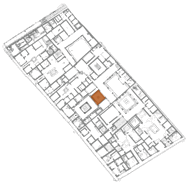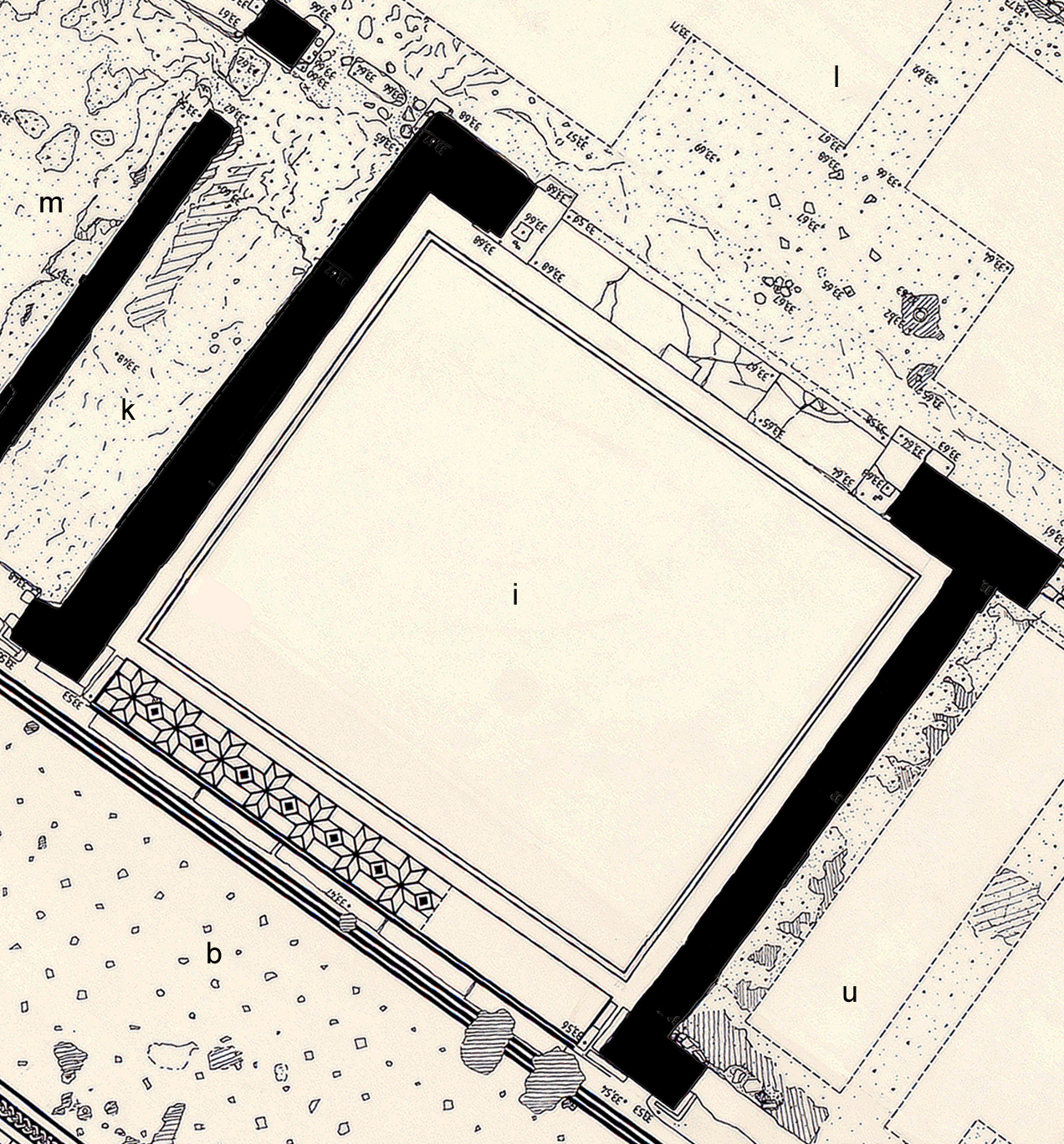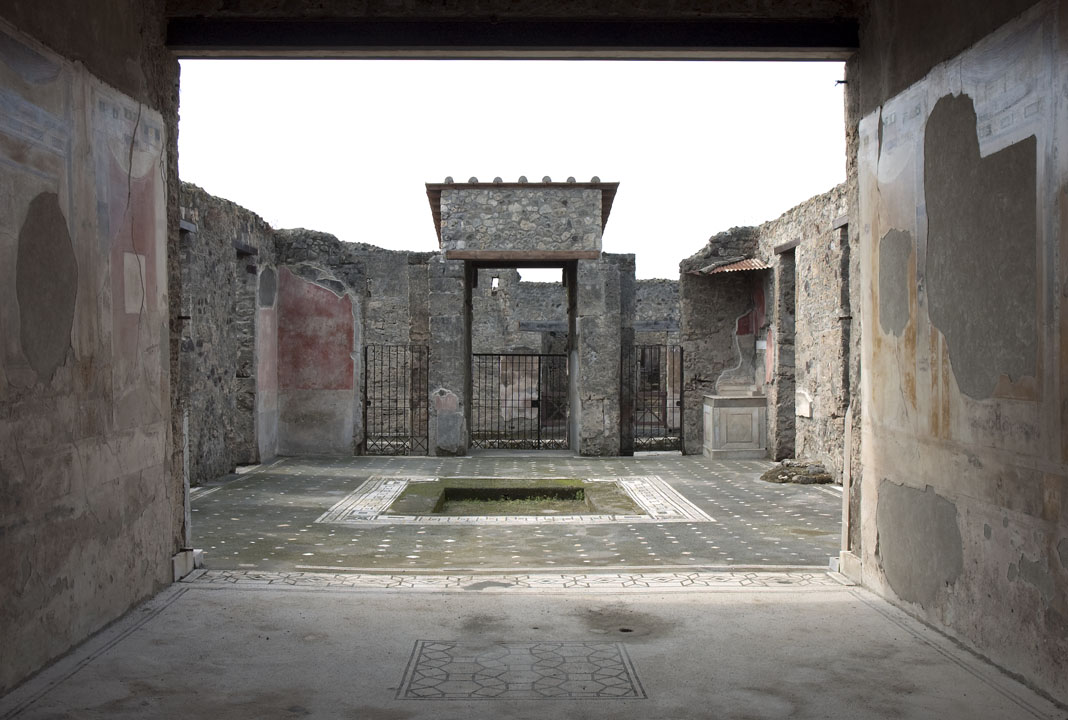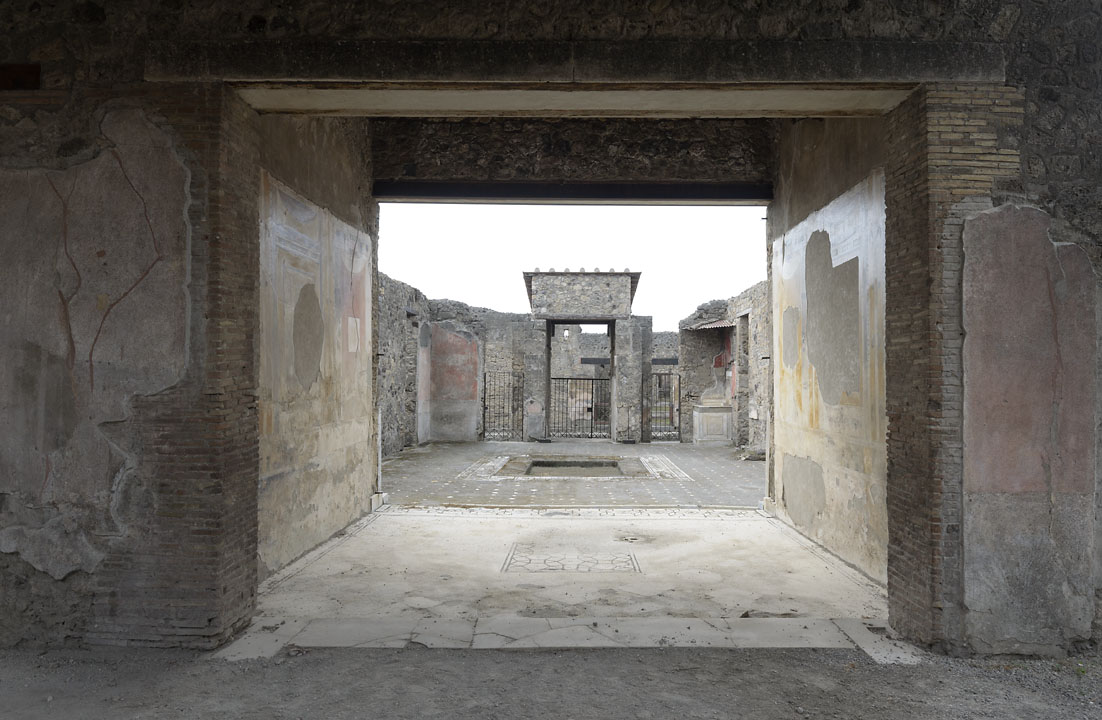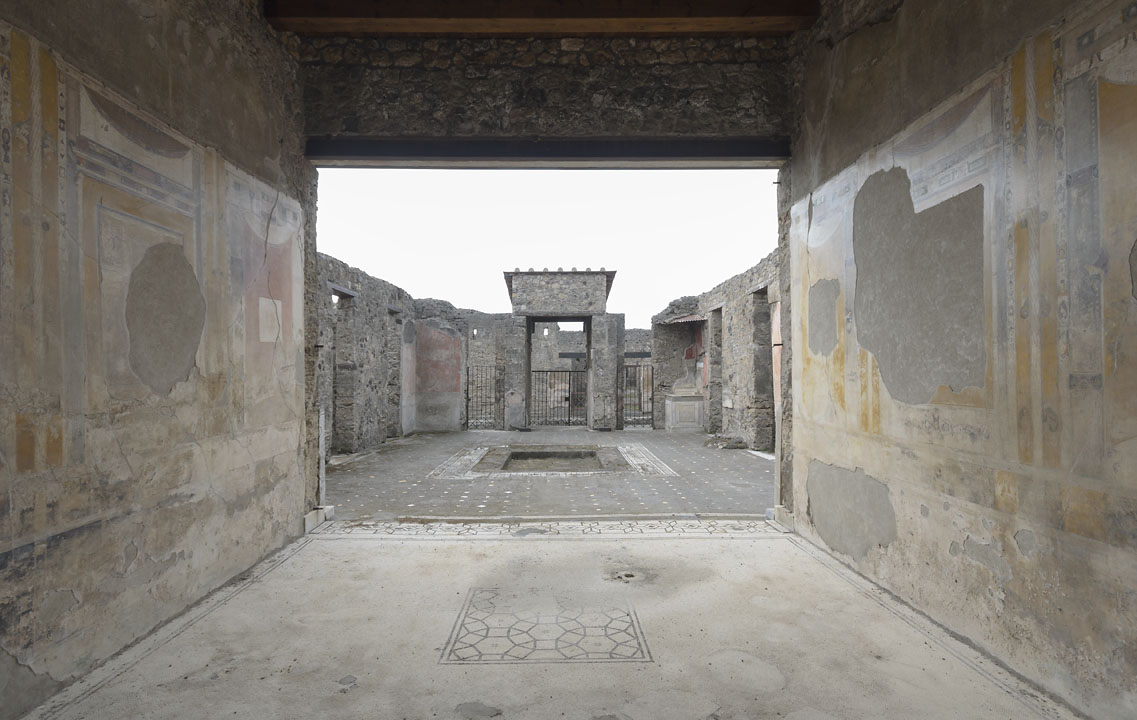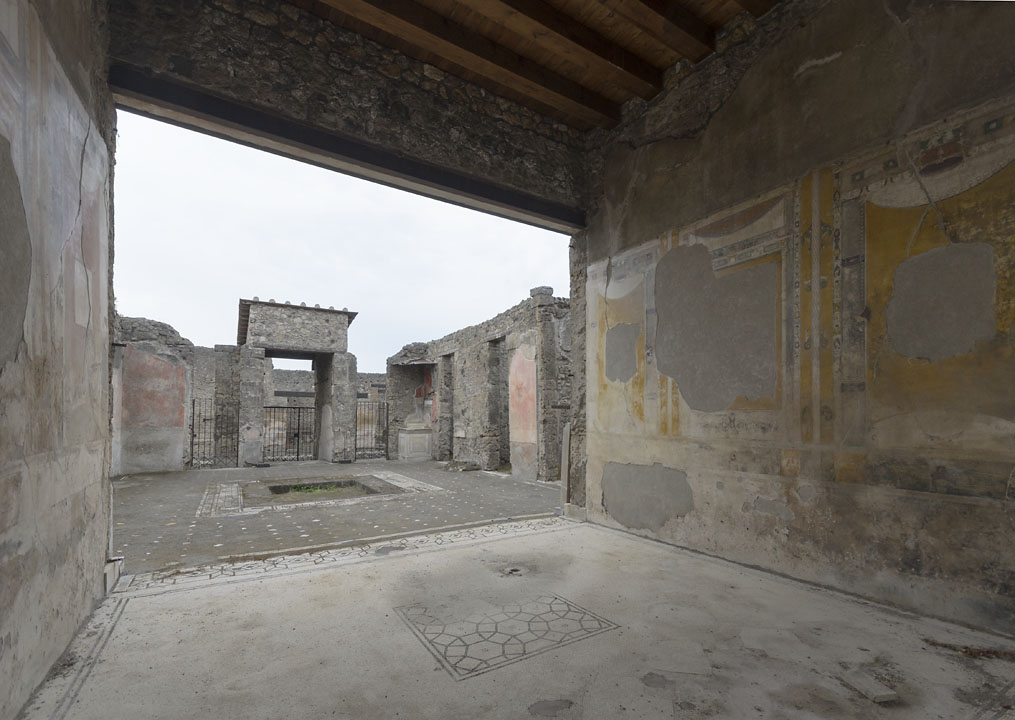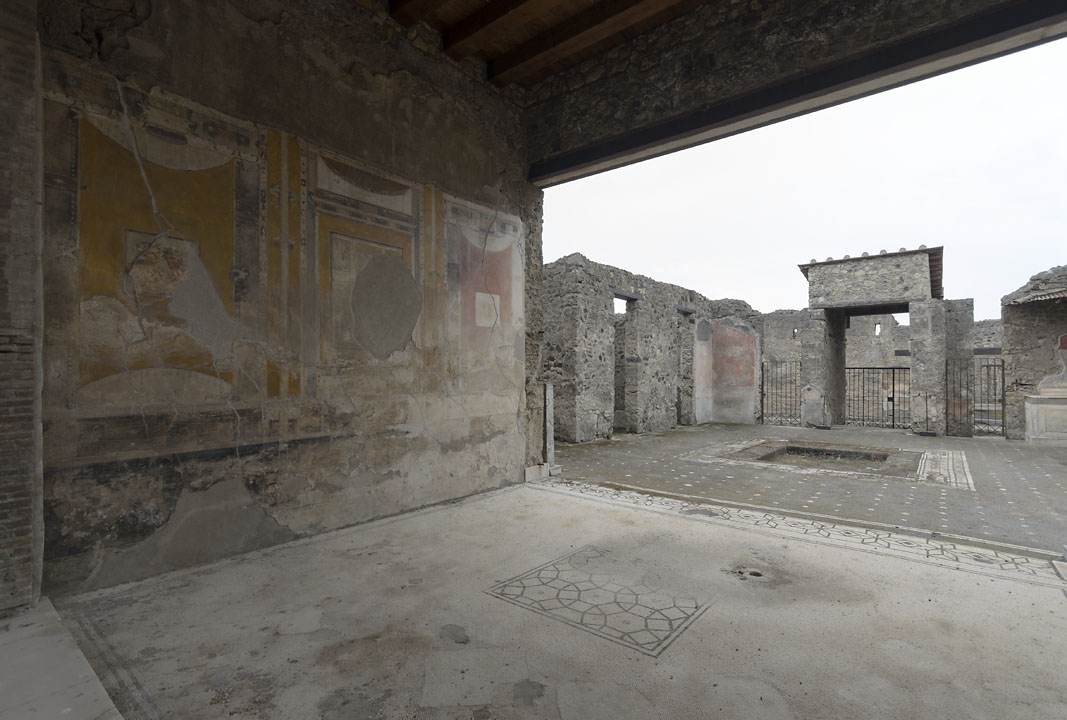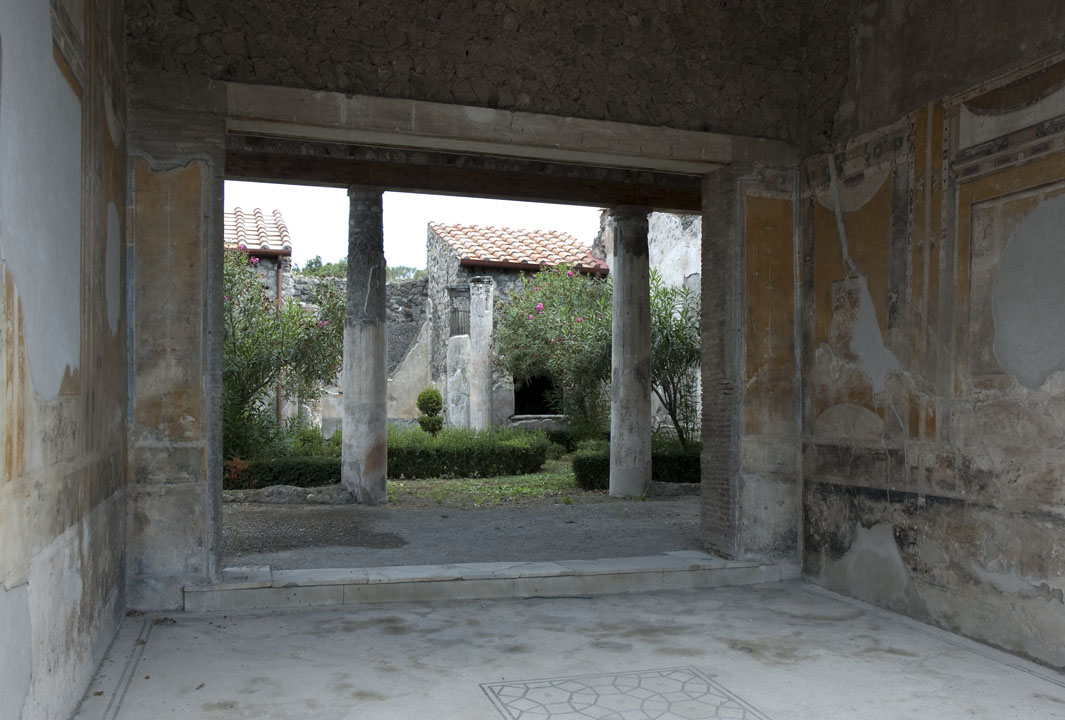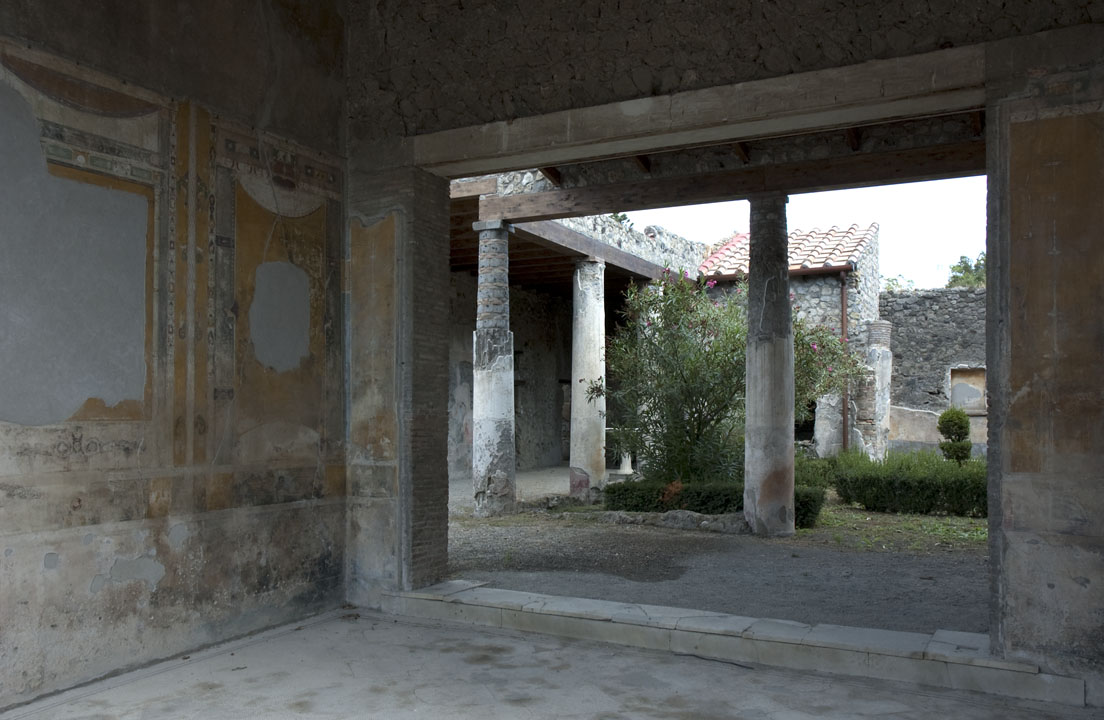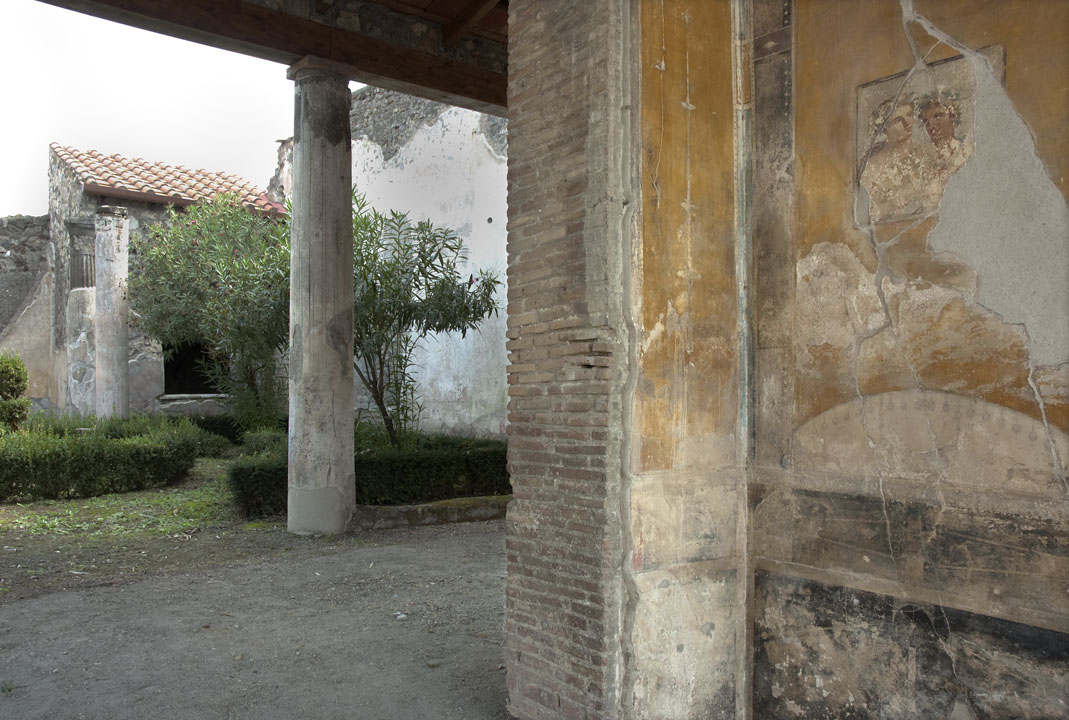Room i (tablinum)
Description
A. Karivieri & R. Forsell
The almost square room was fully opened towards the atrium and had a wide opening towards the peristyle. A mosaic border serving as threshold separates the mosaic floor of the atrium from that of the tablinum. A raised marble threshold leads to the western portico of the peristyle garden, situated at a slightly higher level. The importance of the room is revealed by its high-quality painted decoration, belonging to the late Third Style, characterized by the rich miniature execution of the ornamental details of the frameworks. The stylistic dating is attributed to the early 40s. The two main walls closely correspond in layout and complex designs, whereas the decoration of the load bearing pylons framing the exit towards the garden consists in main of a sole candelabrum.
The main layout follows the tripartite scheme, three fields in width and three zones in height. The walls still give a good idea about the original decoration but several of the figurative panels of the middle zone have been detached and moved to the MANN. The lower zone (dado) is badly damaged, and the upper zone is missing. However, exception made for the upper zone of the main walls, most missing parts are known thanks to early documentation in text, painting and photography. In the middle zone all yellow is the background colour in all fields but one, which is red. In the late 19th century, both Mau and Presuhn state that all fields were cinober red, which means that the yellow operated as base for the more expensive pigment.
Slender columns, set against a stripe of yellow, separate the fields. Higher than the fields, they create an impression of perspective. They stand on bases situated inside the predella that separates the dado and the middle zone. Their upper parts go missing when entering the upper zone. A horizontal border crowns the predella and constitutes the baseline for the vertical framing borders which on each side of the columns support the upper borders of the fields.
The central and most complex field is configurated as an aedicula with two slender columns in antis carrying an architrave, and above an upper floor consisting of six columns supporting a domed roof, or velum. The vertical framing borders inscribe the whole design, including its fictive rear wall decoration, that is the figurative panel and its black dado. The side fields are less complicated. The figurative panels are set as though middle pictures on a textile velum attached to hooks on each long side and more open on the short sides to billow in the wind.

